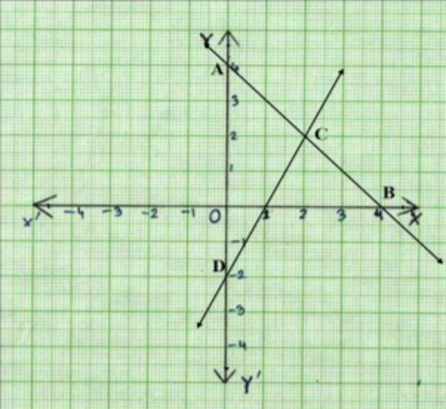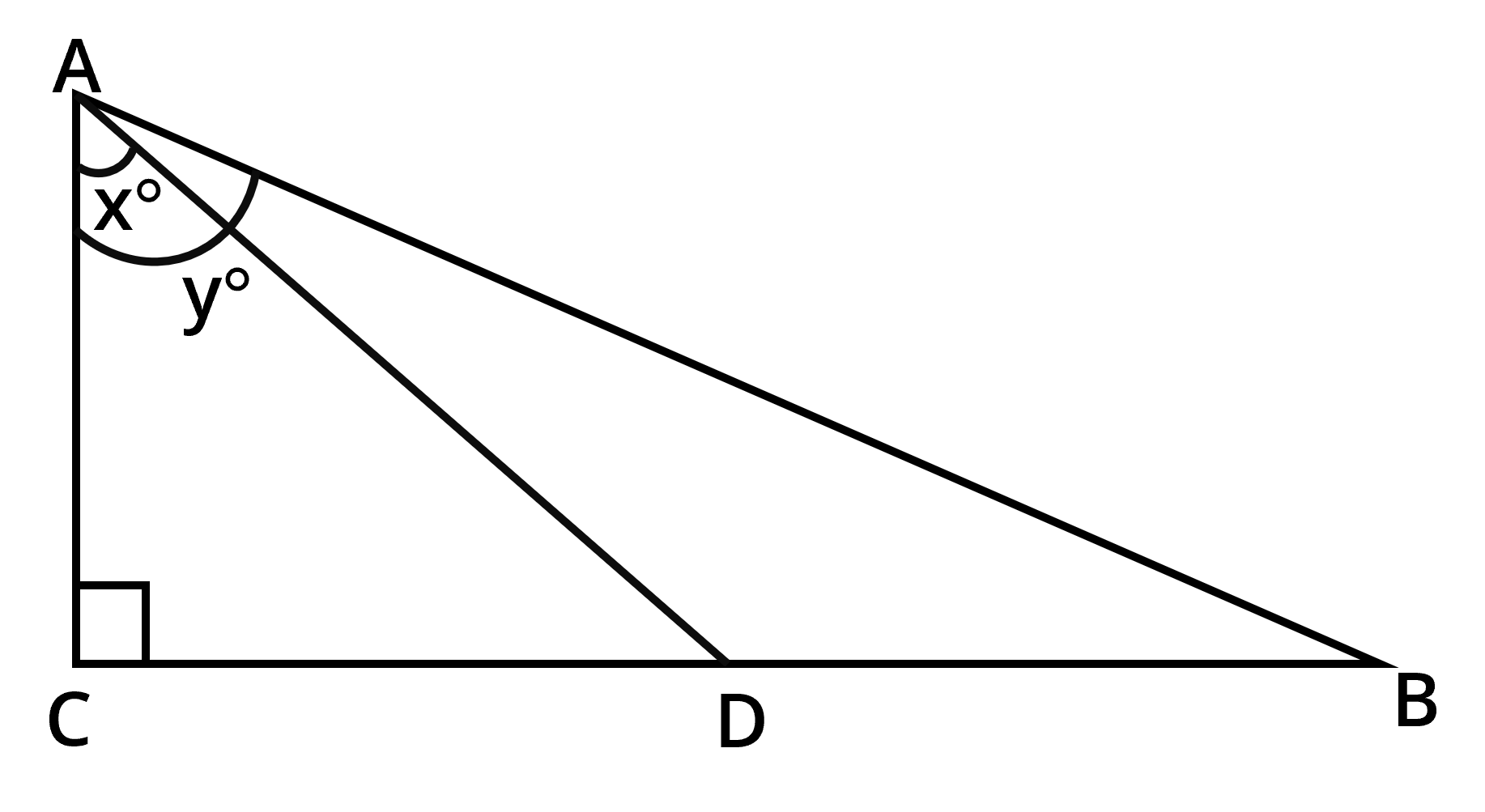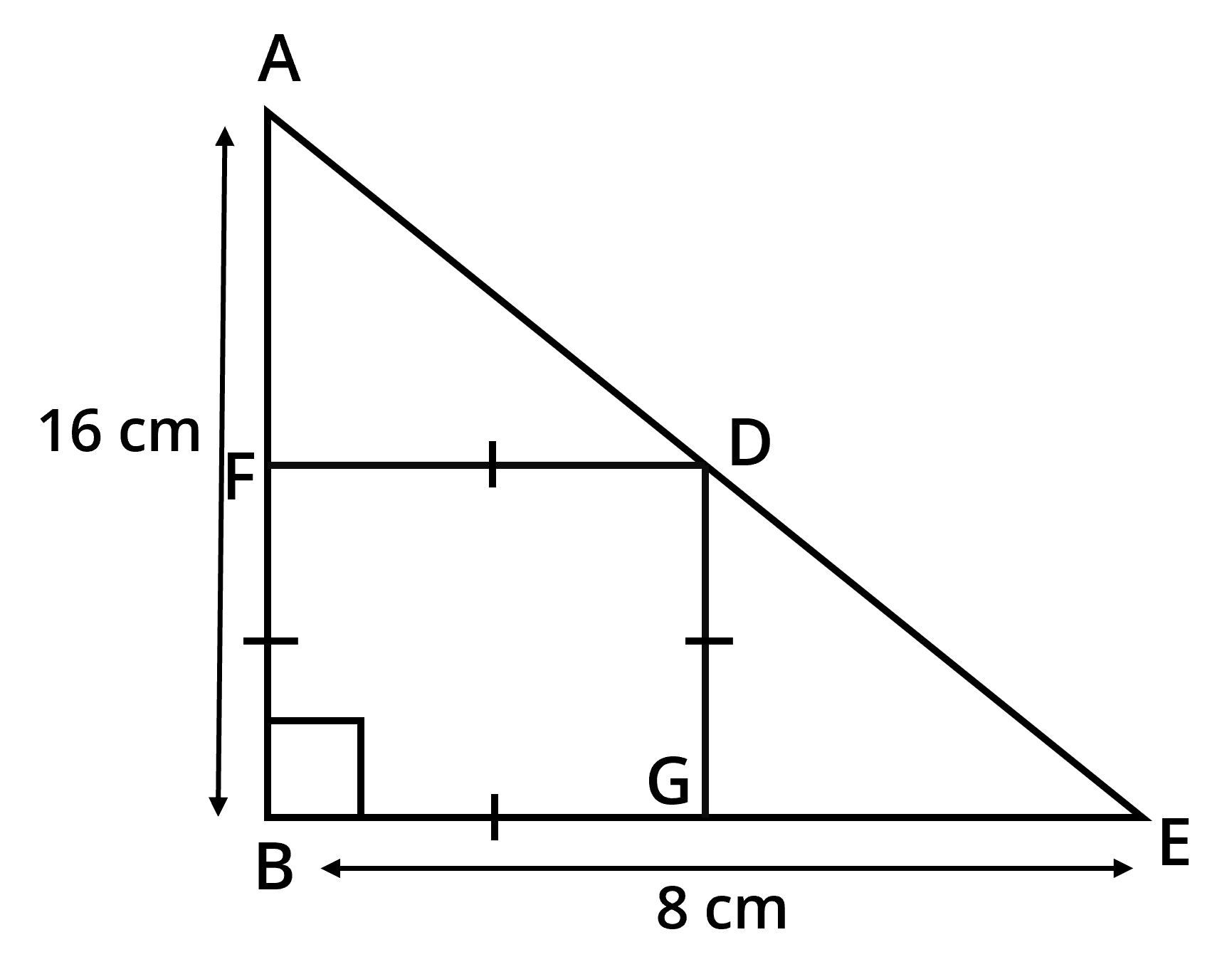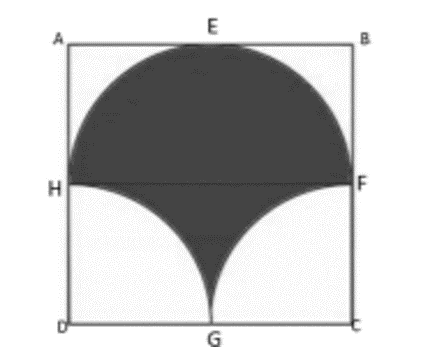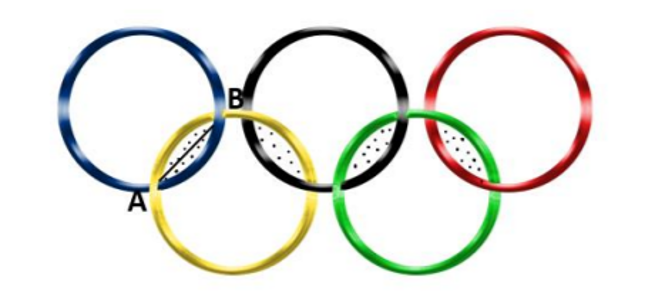CBSE Sample Paper Solution | 2021-22 Section B
Solutions and Videos | 20 Multiple Choice Questions
Section B of the CBSE Class 10 Sample Paper (Standard) for Term I has 20 questions. All questions are multiple choice questions. All questions carry 1 mark each. You have to answer 16 out of the 20 questions. The following is the break up of the number of questions that appeared from each of the eight chapters that were part of the Term I syllabus.
- Real Numbers 3 questions
- A Pair of Linear Equations in 2 Variables 3 questions
- Triangles 2 questions
- Coordinate Geometry 3 questions
- Introduction to Trigonometry 3 questions
- Areas related to circles 3 question
- Probability 2 questions
- Polynomials 1 question
Section B 20 Multiple Choice Questions
Question 21
If sum of two numbers is 1215 and their HCF is 81, then the possible number of pairs of such numbers are
Question 22
Given below is the graph representing two linear equations by lines AB and CD respectively. What is the area of the triangle formed by these two lines and the line x=0?
![Graph]()
Question 23
If tanα + cotα = 2, then tan20α + cot20α =
Question 24
If 217x + 131y = 913, 131x + 217y = 827, then x + y is
Question 25
The LCM of two prime numbers p and q (p > q) is 221. Find the value of 3p - q.
Question 26
A card is drawn from a well shuffled deck of cards. What is the probability that the card drawn is neither a king nor a queen?
Question 27
Two fair dice are rolled simultaneously. The probability that 5 will come up at least
Question 28
If 1 + sin2α = 3sinαcosα, then values of cotα are
Question 29
The vertices of a parallelogram in order are A(1, 2), B(4, y), C(x, 6) and D(3, 5). Then (x, y) is
Question 30
In the given figure, ∠ACB = ∠CDA, AC = 8cm, AD = 3cm, then BD is
![Triangles]()
Question 31
The equation of the perpendicular bisector of line segment joining points A(4, 5) and B(-2, 3) is
Question 32
In the given figure, D is the mid-point of BC, then the value of \\frac{cot x}{cot y})
![Triangles]()
Question 33
The smallest number by which \\frac{1}{13}) should be multiplied so that its decimal expansion terminates after two decimal places is
Question 34
Sides AB and BE of a right triangle, right angled at B are of lengths 16 cm and 8 cm respectively. The length of the side of largest square FDGB that can be inscribed in the triangle ABE is
![Triangles]()
Question 35
Point P divides the line segment joining R(-1, 3) and S(9, 8) in ratio k : 1. If P lies on the line x - y + 2 = 0, then value of k is
Question 36
In the figure given below, ABCD is a square of side 14 cm with E, F, G and H as the mid points of sides AB, BC, CD and DA respectively. The area of the shaded portion is
![Figure]()
Question 37
Given below is the picture of the Olympic rings made by taking five congruent circles of radius 1cm each, intersecting in such a way that the chord formed by joining the point of intersection of two circles is also of length 1cm. Total area of all the dotted regions assuming the thickness of the rings to be negligible is
![Olympics Area]()
- 4(\\frac{\pi}{12}) - \\frac{\sqrt{3}}{4}) ) cm2
- (\\frac{\pi}{6}) - \\frac{\sqrt{3}}{4}) ) cm2
- 4(\\frac{\pi}{6}) - \\frac{\sqrt{3}}{4}) ) cm2
- 8(\\frac{\pi}{6}) - \\frac{\sqrt{3}}{4}) ) cm2
Question 38
If 2 and \\frac{1}{2}) are the zeros of px2 + 5x + r, then
Question 39
The circumference of a circle is 100 cm. The side of a square inscribed in the circle is
- 50\\sqrt{2}) cm
- \\frac{100}{\pi}) cm
- \\frac{50\sqrt{2}}{\pi}) cm
- \\frac{100\sqrt{2}}{\pi}) cm
Question 40
The number of solutions of 3x + y = 243 and 243x - y = 3 is
Try CBSE Online Coaching
Class 10 Maths
Register in 2 easy steps and
Start learning in 5 minutes!
FREE Online Revision Classes
CBSE Class 10 Maths - 2021
- Real Numbers Revision Class
- Polynomials Revision Videos
- Linear Equations Revision Class
- Quadratic Equations Revision Class
- Arithmetic Progressions Revision Video
- Triangles Revision
- Coordinate Geometry Revision
- Trigonometry Revision Class
- Appl of Trigonometry
- Circles Revision Class
- Areas Related to Circles Revision Videos
Copyrights © 2016 - 22 All Rights Reserved by Maxtute.com - An Ascent Education Initiative.
Privacy Policy | Terms & Conditions
Mobile: (91) 93822 48484
WhatsApp: WhatsApp Now
Email: [email protected]

